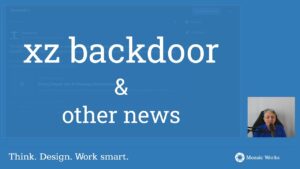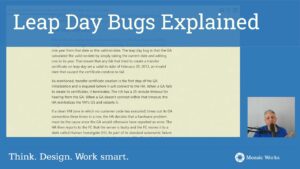The question of How to keep your team motivated pops up in various discussions with managers. The reasons vary, but with the increasing generation gap (think Millenials are coming), learning this is a process that requires adjustment. Feedback helps us adjust the work behaviour and keeps the motivation level high.
Gathering knowledge across a couple of years, there are a few ideas that stuck:
- show people progress by emphasising small advancements towards the bigger goal
- find incentives outside the material resources
- challenge your own daily routines
Give intrinsic incentives? Show the small steps towards progress? Some of us do question this approach. Myself, after having experienced with working in international team, I’ve realised how important is to find the right, creative ways to keep people engaged, to work towards same goals while being happy and productive.
For you to experiment new techniques, here are some means to better engage the teams:
open space
hackathons
company retreats
Open Space: learning with no predefined agenda
Open space is a simple, yet highly interactive and effective methodology to enable people sharing their knowledge and learning from one another. The participants have the chance to explore new ideas, bring their own passions into discussion and have free conversations on interesting topics. For technical events, one can even engage in live coding and pair programming.
Many times, open space is used during events, such unconferences. More recently, this format is used as means to better engage the teams and as learning tool inside organisations.
The main benefit of having an open space with your team(s) is that participants will create on the spot the agenda of the event, building constructive dialogues and focusing on the things they have a genuine interest in.
To start organising an in-house open space, set a time slot and a dedicated space. Together with the team, choose a facilitator for the sessions and announce internally the details. The chosen venue has to be large enough and have walls/board where you can stick things (e.g post-its with the topics).
In company Open Space Market Place
The Open Space has no pre-defined agenda. The facilitator encourages participants to propose topics at the beginning. The attendees can either propose topics they would like to learn more about or topics they would like to share more with others. Another example can be a problem still in search for a solution.
Have no fear – there is no such thing as I can’t make a contribution or I necessarily need to prepare in advance or I don’t know.
In closing, the facilitator invites everyone to the retrospective. The participants share briefly what they learnt or shared with the others. This way, evan the persons who didn’t attend certain sessions, still have a chance to get an overview of the topics discussed.
Example of information radiation board, to be presented at the end of Open Space
Open Space has a small set of principles, offering the participants the possibility to best engage in creative and constructive dialogues:
- Whoever shows up is the right person
There are plenty of sessions running in parallel. Whoever comes to a session is the person who can contribute most to that conversation.
- Whatever happens is the only thing that could have
This principle acknowledges that the participants should focus on what they can do during that specific session, the present time and place.
- Whenever it starts is the right time
The creative spirit has its own time, and in order for the participants to do their best contribution and enter the flow of creativity, the session starts when the participants are ready.
- When it’s over, it’s over.
As the discussions start at their own pace, it’s the same for closing. When the participants don’t feel like they are contributing or learning, they go to attend other sessions.
The Law of two feet gives the attendees the freedom to attend different discussions they are interested in/can make a contribution at/learn something new etc.
Let me give you our own company example: A while ago, we’ve started to organise company open space at the Mozaic Works & MozaicLabs office. One of us is facilitating and prepares the team for the sessions. We usually have an Open Space once a month.
After the facilitator makes the introduction – shares briefly the schedule, rooms and Open Space principles – the team starts adding topics. Given our context, the sky is the limit – each of us can propose topics related with new ideas, new projects, questions or improvements and so on.
The benefits of organising an Open Space for your team(s) are multiple:
- both sharing and learning from each others
- improve work behaviour and long-term thinking – e.g better planning, lateral thinking, giving feedback
- clarifies information about projects they are not constantly involved
- start thinking about new ways to improve their core activities
- challenge their views on certain topics
- and find creative, innovative solutions in your context
Hackathons: hacking your way to bright ideas
5 years ago, hackathons weren’t a wide spread phenomena. Fast forward today, this type of event is gaining a momentum and not only for programmers.
Hackathons are a great tool to encourage brainstorming, stimulate creativity and find some pretty crazy good ideas. They foster the company’s culture change, can help pivot towards other projects and motivate the team.
A hackathon is an event held within a finite amount of time – usually 24/48 hours. People get together in small teams to design, build, and demo a new product or feature. Having multiple purpose, hackathons can happen both small scale (e.g in-house events) or large one. For example, Code for America and National Day of Civic Hack brings thousands of people across USA together to use their coding skills for social good.
The internal hackathons have started to gain more interest as well. PayPal is organizing Battle Hacks in 14 cities around the world. In teams, the developers will work for 24 hours to bring up new ideas and projects for the company. Among the projects brought to life during these hackthons one can find apps destinated to animals shelters, a cause PayPal is constantly investing.
Facebook has already hosted more than 50 internal hackathons: employees from across the company took a break from their regular projects to develop mind-blowing ideas. Products like instant messaging feature Facebook Chat and Instagram’s time-lapse tool Hyperlapse emerged during internal hackathons.
Organising an internal hackathon can:
- Offer the team the possibility to explore working with new technology stacks
- Find new talents inside the team
- Build synergy across the teams
- Fast prototyping
- Identify some bright new ideas
- Give people a new type of incentive – e.g build an app for a social cause
- Become a new type of learning experience
- Break the day-to-day routine
- Tap into the team creativity
Hackathons are not only suitable for large companies. Startups, small and medium companies can also benefit from this type of events. It helps boosting team creativity, provides ground for new ideas and builds a stronger team.
Company retreat: take a few days outside the city to do strategic planning
Forget about traditional team buildings & motivational speakers (at least from time to time) and give a try for a company retreat. Organised once or twice a year – summer and winter – a company retreat is an alternative way to bring the team together, outside their daily routine. As more and more organisations become open and flexible, a company retreat will also empower the people towards the transition to self-organizing or even self-managing teams.
This way, you can better enhance the communication between team members, do strategic planning, have an overview of the business or have a dedicated time to find the next big ideas. Usually, a company retreat lasts from a couple of days to 3-4 days, preferably outside the city. This format allows a mix of strategic planning and learning and it can also bring up the creativity and innovation.
As a means to increase the employees’ motivation, companies’ retreats can contribute to:
- Give a forward perspective
- Better connection within the team members
- Have an overview of the strategy
- Galvanize people to work toward a shared goal
- Create a stronger team
- Brainstorming
- Enables communication, bring up creativity and innovation
What’s your perspective?
Fostering a productive and creative environment takes time and effort. Using innovative ways to involve the team in the creative loop, can speed up your organization’s quest towards amazing results.
Are you organising inside your company any of the above? Let us know in a comment or use our Twitter @mozaicworks to get in touch. We would love to share your experience to our audience.
Let us know, by taking this short survey, what other information you consider useful. At the end of the survey, you will receive the checklist ‘5 Duties of a Leader‘.












